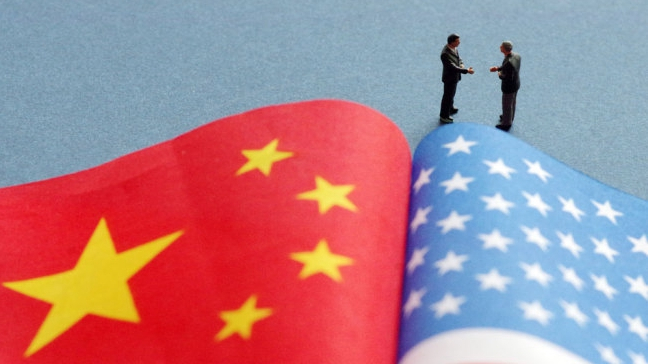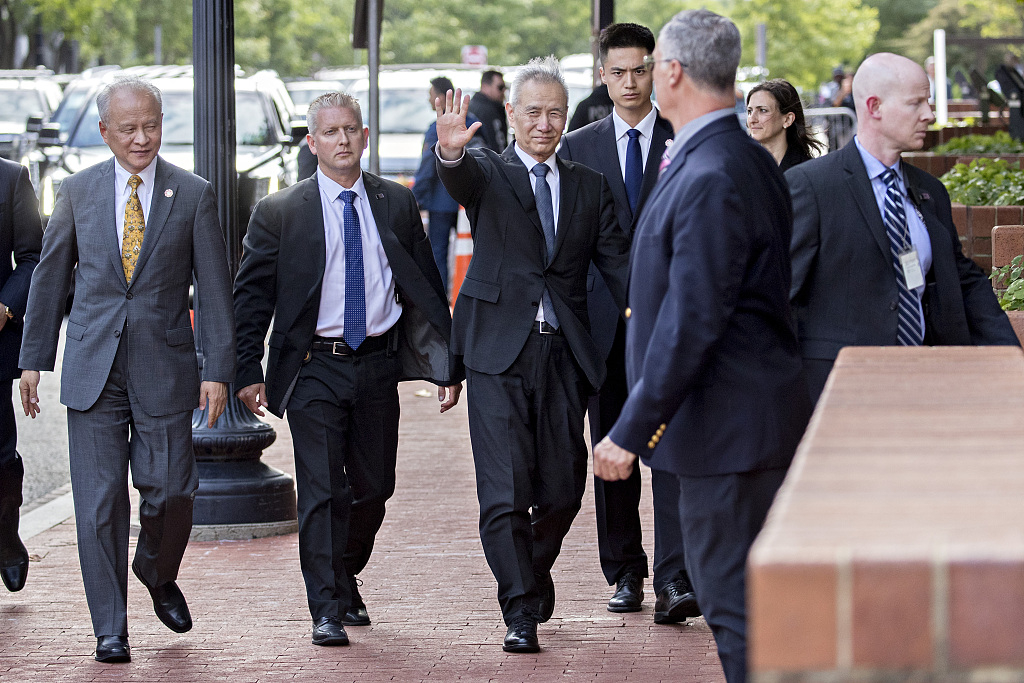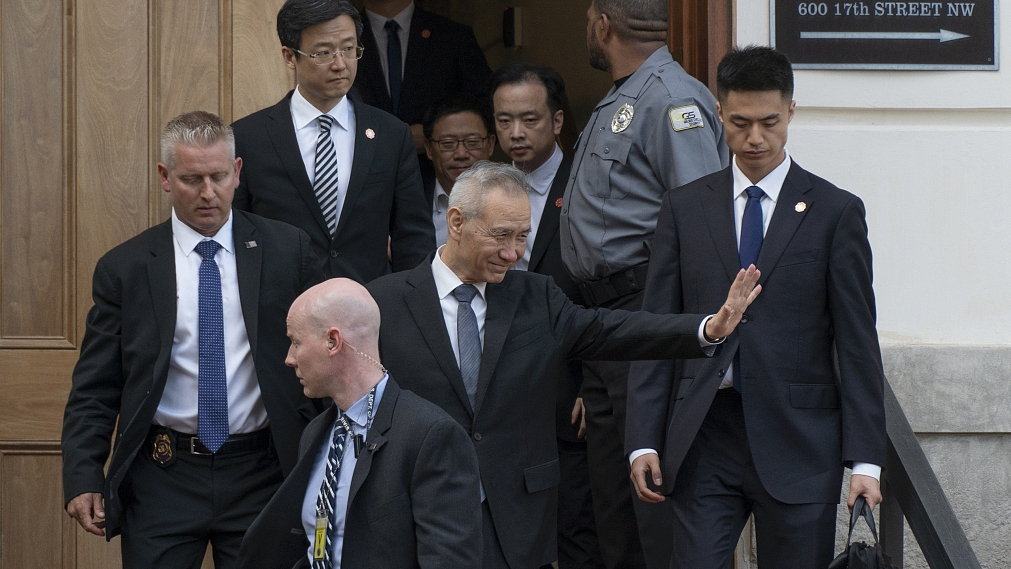
Opinion
12:03, 13-May-2019
China ready to weather any trade storm

Editor's note: The following is an edited translation of a commentary from the Chinese-language "Commentaries on International Affairs." The translated version was first published on China Plus on May 13, 2019.
The United States has made a further threat to impose a 25 percent tariff on the remaining 325-billion-U.S.-dollars worth of Chinese goods, the list of which will reportedly be announced soon. The move follows an increase in tariffs on Chinese imports worth 200 billion U.S. dollars from 10 percent to 25 percent. Meanwhile, the 11th round of China-U.S. high-level economic and trade consultations have just concluded in Washington, with the two sides agreeing to continue the negotiations.
By showing a willingness to continue talks while threatening to further raise tariffs on all Chinese exports to the United States, America is clearly demonstrating a carrot-and-stick approach, hoping to put pressure on China and test the limits of the Chinese side, so as to gain a negotiating advantage.
However, in a statement made after the conclusion of the 11th round of talks, Chinese Vice Premier Liu He sent a clear message to the U.S. side. Liu, also chief of the Chinese side of the China-U.S. comprehensive economic dialogue, made it clear that China has "three core concerns" about the ongoing negotiations, namely to abolish all tariffs, to make sure the trade procurement figures remain in line with reality, and to improve the balance of the text. China will never make concessions on these matters of principle.

Liu He, China's vice premier (center), waves while arriving at the Office of the U.S. Trade Representative in Washington, D.C., U.S., on Thursday, May 9, 2019. /VCG Photo
Liu He, China's vice premier (center), waves while arriving at the Office of the U.S. Trade Representative in Washington, D.C., U.S., on Thursday, May 9, 2019. /VCG Photo
Therefore, no matter how much pressure the U.S. side may put on China, it has never and certainly will never work.
Looking back at the course of more than a year of economic and trade consultations, the two sides have made considerable progress and have also suffered several setbacks.
China regards these as normal twists and turns in the process of intergovernmental negotiations and has always pushed forward the talks with the greatest sincerity because it is fully aware that there can be no winner in any trade war. The introduction of tariffs is neither beneficial to China nor to the United States, and it is certainly not good for the world as a whole. Cooperation is the only right choice set before the two sides.
However, cooperation shouldn't be carried out at the cost of the abandonment of principles. The "three core concerns" of the Chinese side, which delineate both its "red line" and the "bottom line" in the economic and trade consultations, cannot be challenged.
If the U.S. side insists on continuing to impose tariffs, China will have no other choice but to resolutely counter the move. After more than a year of economic and trade friction, China has withstood the tests in all respects, not only greatly enhancing its resilience, but also becoming more and more mature and determined in dealing with the circumstances.
The Chinese side has long since recognized that the introduction of tariffs by the U.S. is, in fact, a kind of "race to the bottom" gambling strategy. It's a move against the current trend, contrary to public opinion, and ultimately will only end in vain.
According to a research report released in February by Trade Partnership Worldwide, if a 25 percent tariff is imposed on the 250 billion U.S. dollars of Chinese exports to the United States, 934,000 jobs will be lost in a year and the annual spending of a family of four in the U.S. will increase by 767 U.S. dollars; if a 25 percent tariff is then imposed on the remaining 325-billion-U.S.-dollars worth of Chinese goods, 2.1 million jobs will be lost in a year and an American family of four will have to spend an additional 2,000 U.S. dollars annually.
Having to play defense in a trade war, China will experience more economic pressure due to the tariff increase, but that pressure will be manageable.
In structural terms, consumption accounts for 76.2 percent of China's GDP growth, while the role of exports has shrunk to 17.9 percent. Domestic consumption is fast becoming a strong economic pillar, offsetting external uncertainties.
From the perspective of trade volumes, in the first four months of this year, bilateral trade between China and the U.S. dropped by 11.2 percent. China's exports to the U.S. edged down by 4.8 percent, while U.S. exports to China plummeted by 26.8 percent, which suggests that U.S. export goods are relatively more replaceable in the Chinese market.
Meanwhile, China's trade surplus over the United States expanded by 10.5 percent, which clearly shows that tariffs are not the fundamental solution to addressing any trade imbalance. If anything, they only increase the cost of living for U.S. consumers.
Moreover, in the first four months of this year, trade with the U.S. made up a smaller proportion of China's total foreign trade, down by 11.5 percent. China's imports and exports with its major trading partners in the EU and ASEAN maintained rapid growth.

Liu He, China's vice premier (center), waves as he departs the Office of the U.S. Trade Representative in Washington, D.C., U.S., on Thursday, May 9, 2019. /VCG Photo
Liu He, China's vice premier (center), waves as he departs the Office of the U.S. Trade Representative in Washington, D.C., U.S., on Thursday, May 9, 2019. /VCG Photo
Most notably, trade volumes with the Belt and Road countries increased by 9.1 percent, 4.8 percentage points higher than the 4.3 percent overall growth in China's foreign trade. China's portfolio of trade partners is growing increasingly diversified, as is its capacity to take on greater pressure and challenges. Should the United States decide to impose tariffs on all Chinese exports to the U.S., China could very well find other buyers by adjusting the structure of its international trade.
Stepping up the pressure will not work. As pressure mounts, China will only gather more strength. Where a trade war is concerned, China has long made it clear: It doesn't want to fight a trade war, yet it also will not falter if it is given no choice. The message from the United States is mixed and ambivalent.
There is both hard talk and honeyed words. China's reaction is clear: It is ready for talks, just as it is ready for a trade war. The Chinese nation has seen 5,000 springs and autumns, with no challenges it has eventually been unable to overcome. Inevitably on the journey of national rejuvenation, obstacles and challenges will present themselves.
A trade war launched by the United States will be a minor setback that China will have to navigate along the way. China always manages to turn challenges into opportunities, test its strength, and find new ways to grow ever stronger.
Whatever external challenges, it is crucial for China to focus on its own path, which is to pursue quality development by deepening reform and opening up. Whatever the United States plans to do next, to carry on with the negotiations, to escalate the trade war, or anything else, China has readied its policy toolbox and is fully prepared for all eventualities. President Xi Jinping has said: The Chinese economy is not a pond, but an ocean... high winds and storms may upset a pond, but never an ocean. Having experienced numerous winds and storms, the ocean will still be there!
(If you want to contribute and have specific expertise, please contact us at opinions@cgtn.com.)

SITEMAP
Copyright © 2018 CGTN. Beijing ICP prepared NO.16065310-3
Copyright © 2018 CGTN. Beijing ICP prepared NO.16065310-3